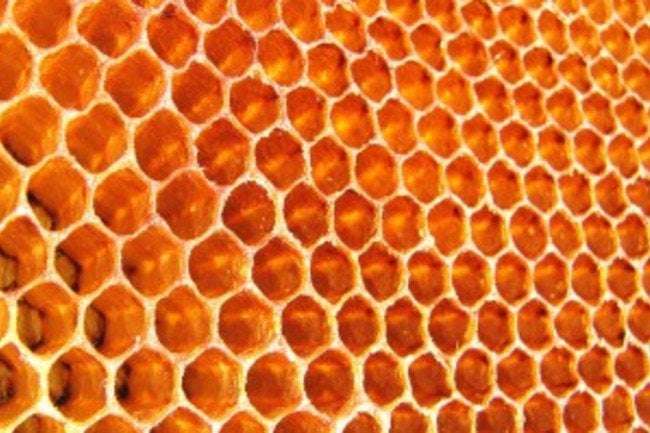Ever wonder how bees make all those hexagons in their honeycombs? It’s not one wall at a time, which might be your first guess. Need a hint? The holes in the honeycomb don’t actually start out as hexagons! In fact, according to this study, the bees make each hole as a circular tube in a precise staggered organization (Figure 1, below). The heat formed by the activity of the bees softens the wax, which creeps along the network between the holes. The wax hardens in the most energetically favorable configuration, which happens to be the rounded hexagonal pattern that honeycomb is famous for. Sweet!
Honeybee combs: how the circular cells transform into rounded hexagons.
“We report that the cells in a natural honeybee comb have a circular shape at ‘birth’ but quickly transform into the familiar rounded hexagonal shape, while the comb is being built. The mechanism for this transformation is the flow of molten visco-elastic wax near the triple junction between the neighbouring circular cells. The flow may be unconstrained or constrained by the unmolten wax away from the junction. The heat for melting the wax is provided by the ‘hot’ worker bees.”
<span bold='true'>Figure 1.</span> Italian honeybee (Apis mellifera Ligustica) comb cell at (a) ‘birth’, and at (b) 2-days old, scale bar is 2 mm. (Online version in colour.)
Figure 1. Italian honeybee (Apis mellifera Ligustica) comb cell at (a) ‘birth’, and at (b) 2-days old, scale bar is 2 mm. (Online version in colour.)

Grow_Beyond on October 27th, 2020 at 06:33 UTC »
I learned this from Blindsight.
HuoLongHeavy on October 27th, 2020 at 05:30 UTC »
Hexagons are the shape with the most sides and as close to a circle that can still tessellate, so it appears a lot in nature.
Hyperf0cused on October 27th, 2020 at 05:20 UTC »
That’s actually pretty fascinating